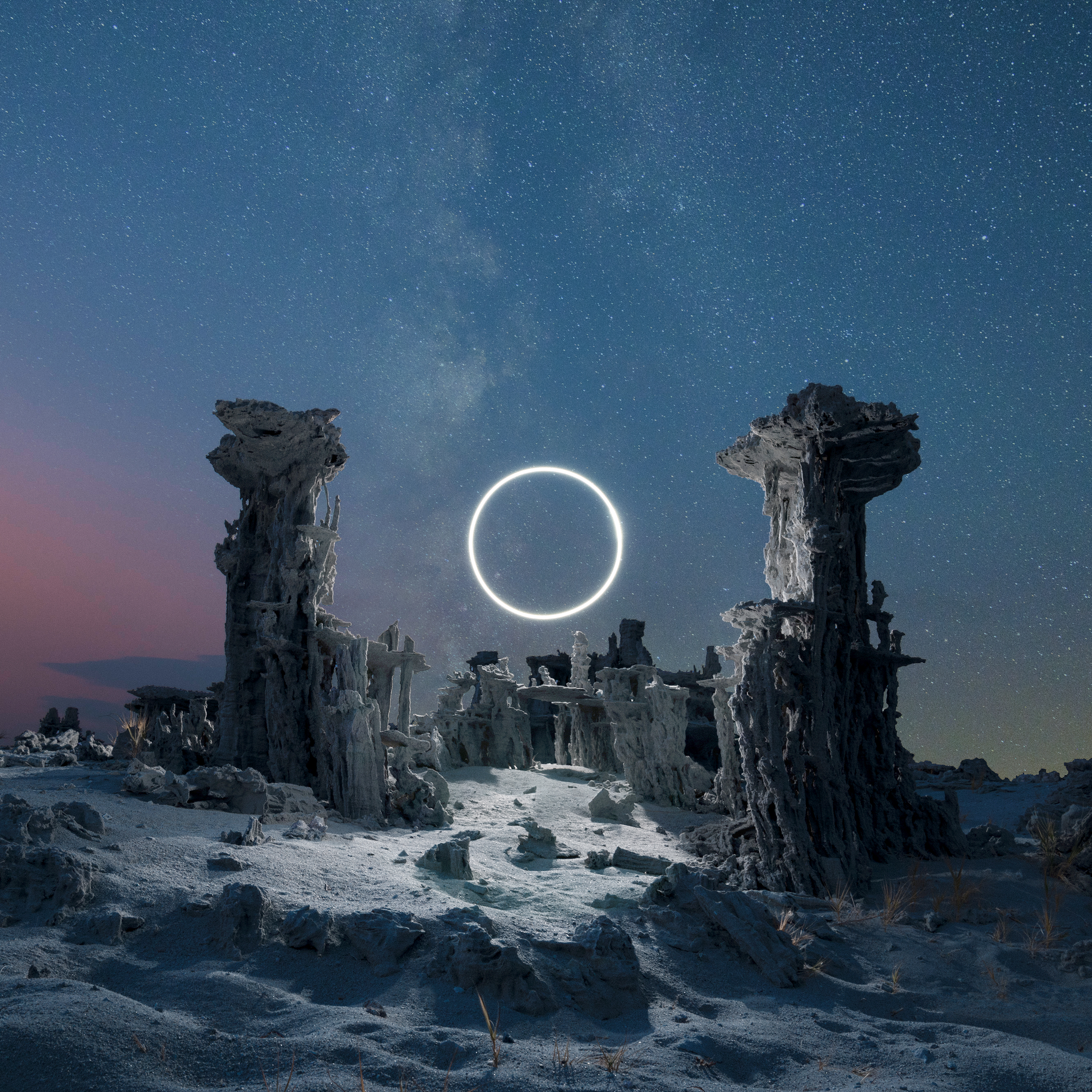IMN #16 — Reuben Wu

It's Monday Night #16
Tonight, let’s share thoughts about @Reuben_Wu’s work: the unexpected meeting of generative art and landscape photography.
In a work of great technical and formal mastery, @Reuben creates not so much pictures as light sculptures that turn postcard landscapes into metaphysical enigmas.
@Reuben_Wu brings out the unknown, the uncanny in the heart of the most familiar and confronts the immaterial geometry of luminous forms with the solid, rocky, fluid, icy concreteness of a deserted world.
What @Reuben_Wu photographs are spaces in transition. He captures the tipping point: when the pallor of dusk melts into night, when the first light of dawn opens up a spectrum of increasingly warm colors in the sky.
But also: that fleeting moment, which can last for hours, when the deep night deepens again.
In a sense, @Reuben_Wu fits perfectly into the centuries-old tradition of landscape art.
But what is a landscape? Something ambiguous, really.
On the one hand, it is a work of nature, which is perhaps the most gifted of artists: it freely creates harmony, contrasts, symmetries, an agreement between the large and the small, the same and the diverse.
On the other hand, it is the effect of an imagination that recognizes, in a place empty of all humanity, the sublime figure of the earthly paradise.
There is an element of madness in any real landscape. @Reuben_Wu works precisely within this madness.
This has nothing to do with whether or not one is a believer: when faced with a landscape, one hesitates between recognizing the imprint of a divine hand and the proof that this hand does not exist.
In all the cases, there is vertigo: when nature presents to the imagination something which is too big to be thought, when the understanding, the concepts, the logical links do not allow to return reason of what is perceived.
This is what Kant calls the sublime: a panic or a rush of the imagination that is both painful and enjoyable.
Through the landscape, imagination challenges thought and the two faculties clash violently: I cannot understand what I see and, as long as I don't understand it, I cannot understand anything else.
It is not by chance that the landscape plunges the poet into a state of enthusiasm that allows him to create his most beautiful poems: like a muse, the landscape summons the rhapsode to invent a new language to express what cannot be expressed.
@Reuben_Wu is not only a photographer, he is a complete artist: each photo is at the same time a performance, an installation, a sound creation, an original lighting, a hybrid architecture.
He insists on the artificiality of landscape, he unmasks it: he does not show it as a work of nature, but as a construction of the artist.
The gradation of colors, the soundtrack and, of course, the geometric sculptures drawn thanks to the rapid movements of a lighted drone - the landscape appears to us as a manufactured environment.
His work has the formal precision & plastic mastery of a film or advertising set.
Yet it is a lure, a ruse.
Coldness and formalism are in balance with the hallucinogenic power of the image. Above all, what interests Reuben is the emergence of the sign - abstract, disconnected, metaphysical - within an inert world.
Each of @Reuben_Wu's pieces recalled the time of origins: the aberrant presence of an immaterial, radiant geometric figure, suspended in mid-air, manifests the movement of a consciousness awakening to itself.
It is in its face-to-face encounter with a sensitive symbol that human spirit, tearing itself away from its prehistoric animality, becomes aware of its immaterial substance - this is the old lesson of Hegel, which Kubrick remembered in 2001. A Space Odyssey.
The emergence of the perfect form, which can only be seen with the eyes of the mind, contrasts with the minerality and inertia of a desert space. Then the spirit discovers itself in the middle of a foreign, infinite territory, where it is as if exiled, lost, solitary.
@Reuben_Wu's landscapes are enigmas, but they show nothing except enigmatic nature of the enigma: essential is there but cannot be seen.
But, with him, the symbol is not perfect: it is no longer the Hegelian pyramid or Kubrick's monolith, it is a luminous geometry that flashes, multiplies, saturates, fills, empties.
The birth of the sign is brought back to its instability/incompleteness, as if camera captured the time during which the mind understands but doubts: the decisive, critical moment when humanity can enter history (as in Kubrick) or let itself be swallowed by inhumanity of desert.
But @Reuben_Wu shatters the beautiful unity, the beautiful aesthetic totality of the landscape. He segments it, cuts it up and refracts it into a series of photographs, each containing a fragment of the fateful second.
The dance of the drones makes it possible to draw from each video sequence a series of unique photos: the duration explodes in small immobile pieces, scandalized by the minute changes of direction of the flying machines.